A purchase ledger template can be precisely defined as a type of ledger that concludes all the purchases made by an enterprise during a certain period of time. Businesses make numerous transactions with clients and other businesses on a daily basis. It is very important to keep an account of all of that information compiled at one place, and a purchase ledger performs that duty effectively. A number of templates can be used for a purchase ledger, but there is a basic layout that is normally used and contains all the basic sections to incorporate any information regarding purchases. Every purchase mentioned in a purchase ledger is assigned a number generated by the computer or the software and if it is being done manually then a basic number is assigned for the ease of finding those transactions or referring to them elsewhere.
Content of a Purchase Ledger Template:
Companies may tend to have separate accounts for various transactions to deal with different financial matters. A purchase ledger briefly provides all of that information, including the date and the time for a certain product purchase and the exact amount paid in return to that. It also describes the financial details of the person or the organization to which the amount was transferred. Furthermore, a few additional details are required to be added to the purchase ledger for a company’s financial accounts. Those additional details can be classified as the name of the person or the company who has been paid for the purchase. The item or the products purchased are generally assigned a number or a certain code as per company’s policy. The product code is also a major component of the purchase ledger. It makes it convenient to find and gives access to the product for future or any other references. Lastly, for a basic purchase ledger, the tax paid alongside the actual cost of the product purchased is also mentioned separately.
Importance of a Purchase Ledger:
For the convenience of keeping detailed information of the transactions done over purchases, a few companies customize the purchase ledgers to fit their needs accordingly. Such detailed purchase ledgers also incorporate the overview of the method used for the payment by the enterprise. Moreover, the supplier is also provided with an invoice and that is also recorded as a confirmation of the payment in the purchase ledger. In case there were any damaged goods identified among the lot of products acquired during the transaction, the supplier then issues the credit memos in return of the damaged items and that is also kept as a record in the purchase ledger.
How to use a purchase ledger?
All the information entered and gathered in a purchase ledger is then finally transferred to the general ledger. Depending on the company’s policy, the transfer is generally made after the end of an accounting period for a company, or it can also be done in between the accounting period. Whatever the case is, it is made sure that before closing the accounts and once a financial year is being concluded, all the purchase information is posted in the general ledger and is matched with the one in the control account. The balance being listed in the purchase ledger and in that of a control account must be equal to ensure that all the transactions were aptly reported and updated in the ledger. Another thing that is worthy to be mentioned here is that a purchase ledger not only contains the details of the transaction in which a certain amount has been paid to a supplier, but it also contains the amount that a company owes and is still needed to be paid. Such transactions are usually classified under the category of ‘Trade creditors’.
What is the Role of an Employee Who is Responsible for Handling a Purchase Ledger?
It is said that the person responsible for accounting the purchase ledger needs to be extremely vigilant and accurate with the financial information being entered into the ledger. This accounts for most of the financial bookkeeping of any enterprise, since most of the amount going out of the company’s accounts goes in the purchases made in exchange for the products or the services bought. To ensure that the payments made by the company are fully authorized and are entered correctly, the purchase ledger often demands a copy of the invoice issued by the supplier. Those copies are then matched with the amount mentioned in the record for that transaction.
Benefits of Purchase Ledger:
A purchase ledger has the power to impose managerial supervisions, either by development level or on user level. This process will enable a management to handle business transactions with more focus and delegation. That is the reason, a purchase ledger provides multiple benefits which are as follows;
1- A purchase ledger serves as record keeper which holds full record of all business transactions and their correspondences along with essential documents.
2- It provides comfort in assigning authorization controls while making finalizing payment procedures.
3- A purchase ledger provides absolute access to management to take a look at historical activities with any party.
4- The biggest benefit which a purchase ledger provides to an organization is the facility to adding a continuous ordering system. It can enable customers to book orders regularly without any delay.
5- Provides easy options to operate whole purchase system.
6- It equipped with multiple accounts which can be assigned to regular suppliers, keeping their ease at upfront.
7- A purchase ledger provides a bridge between various crucial accounts like; inventory account and party’s account or sales account.
8- It helps management to assign any discounted package or price to a specific party.
Templates for Purchase Ledger
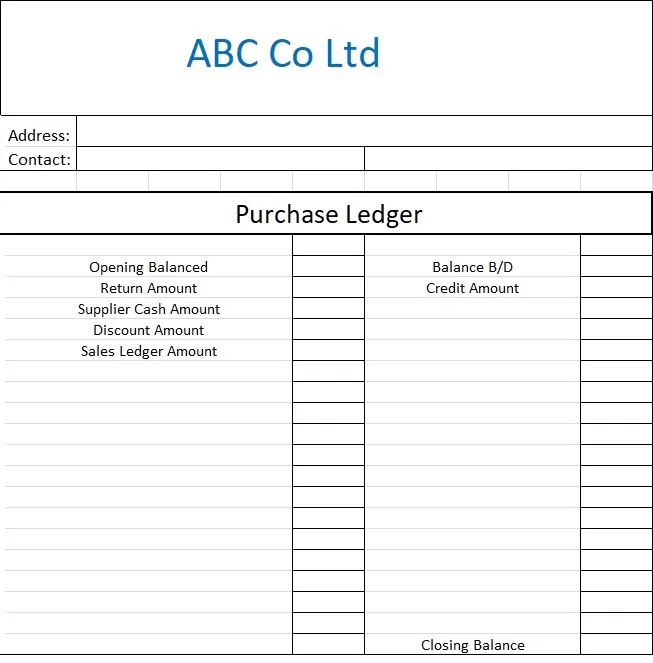

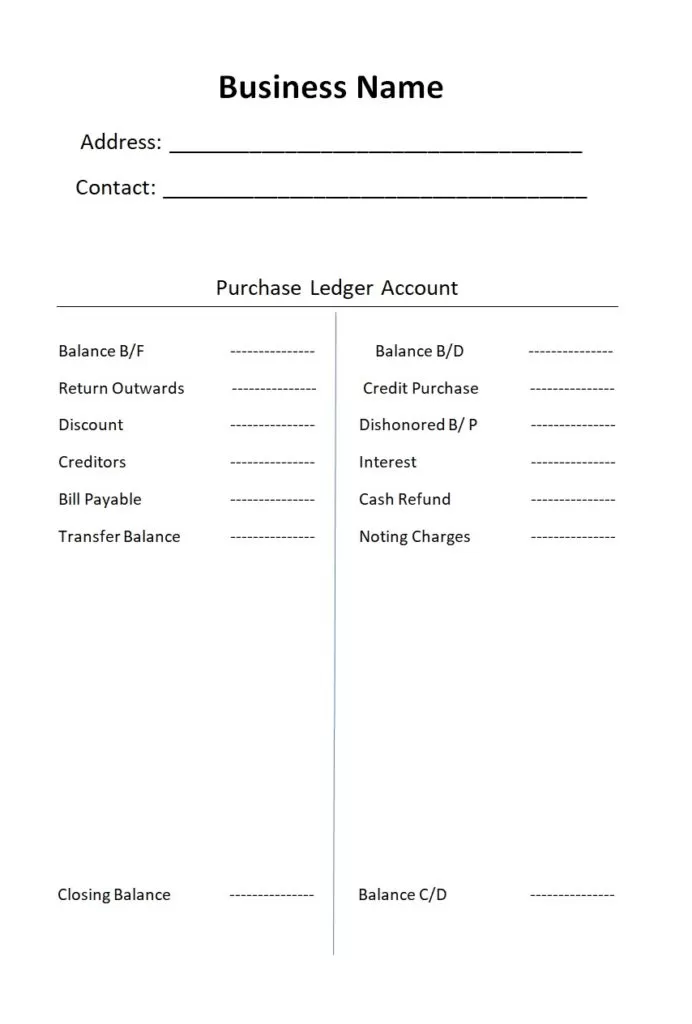

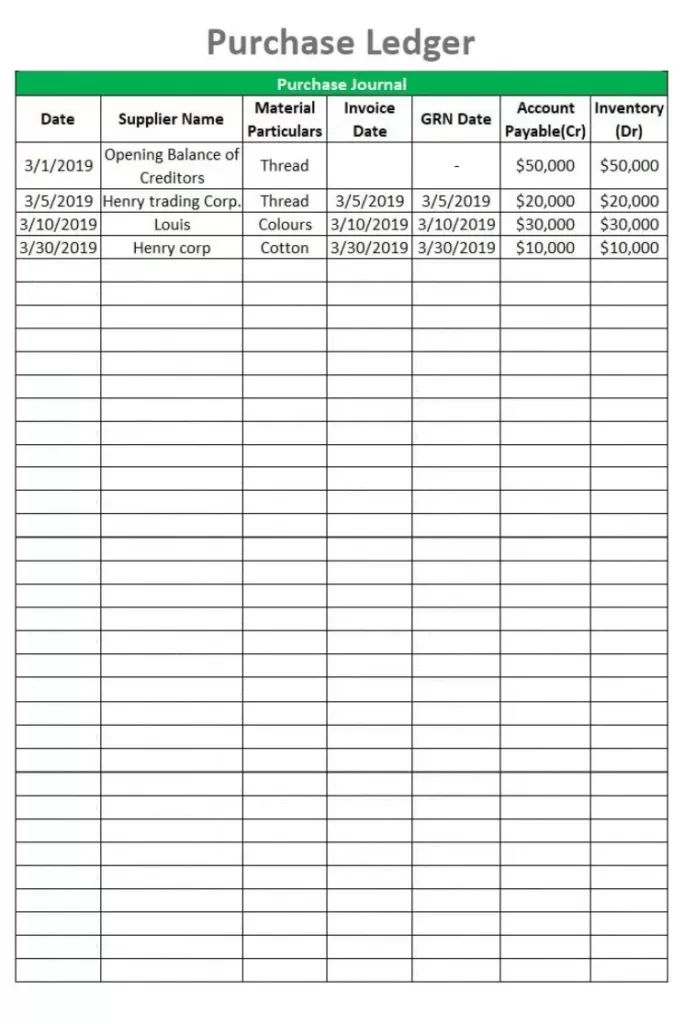
 www.wallstreetmojo.com
www.wallstreetmojo.com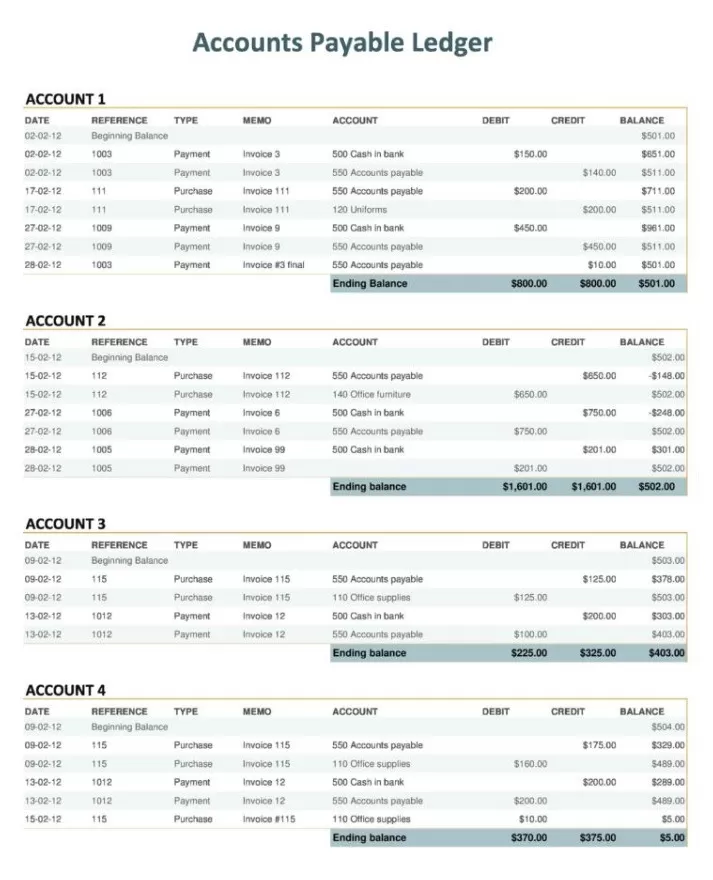
 templatelab.com
templatelab.com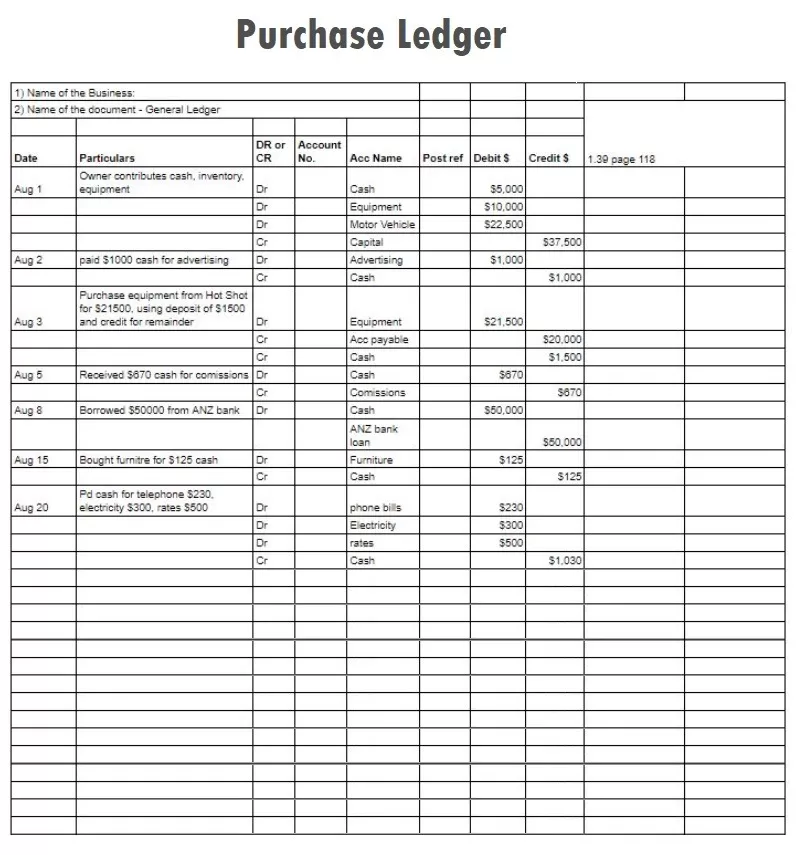
 www.toppr.com
www.toppr.com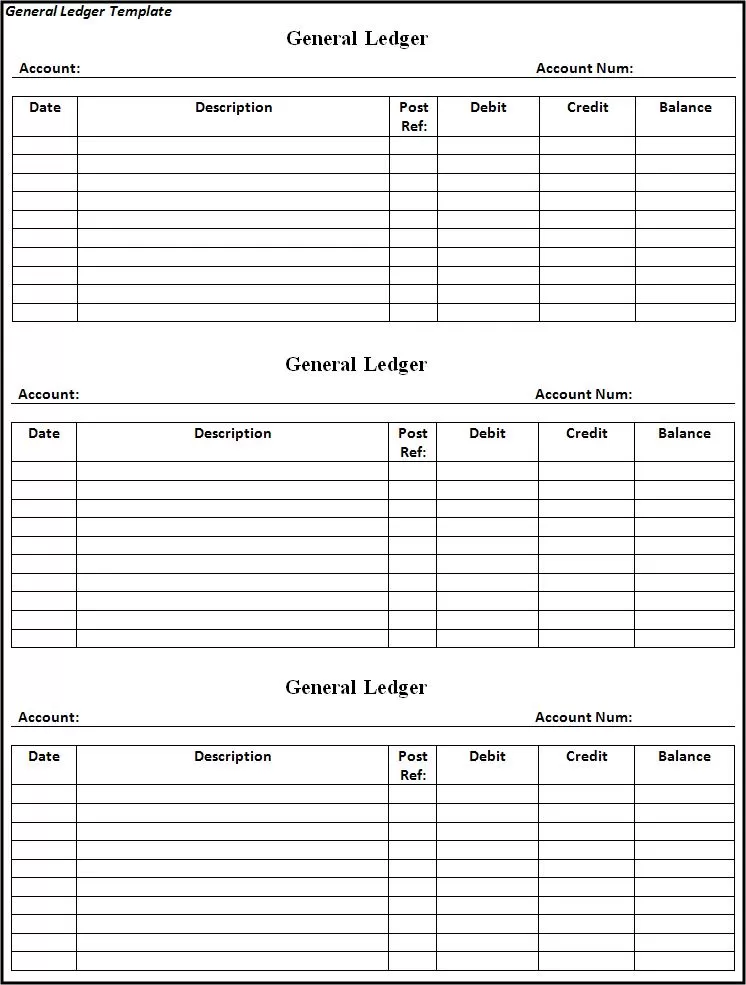

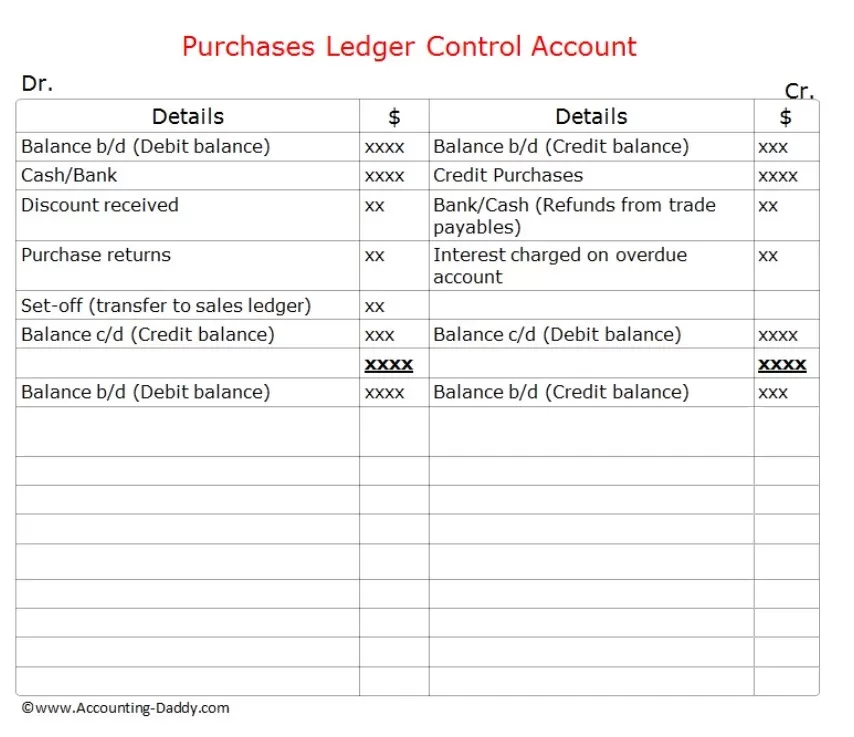
 www.accounting-daddy.com
www.accounting-daddy.com
 www.thekensagroup.com
www.thekensagroup.com